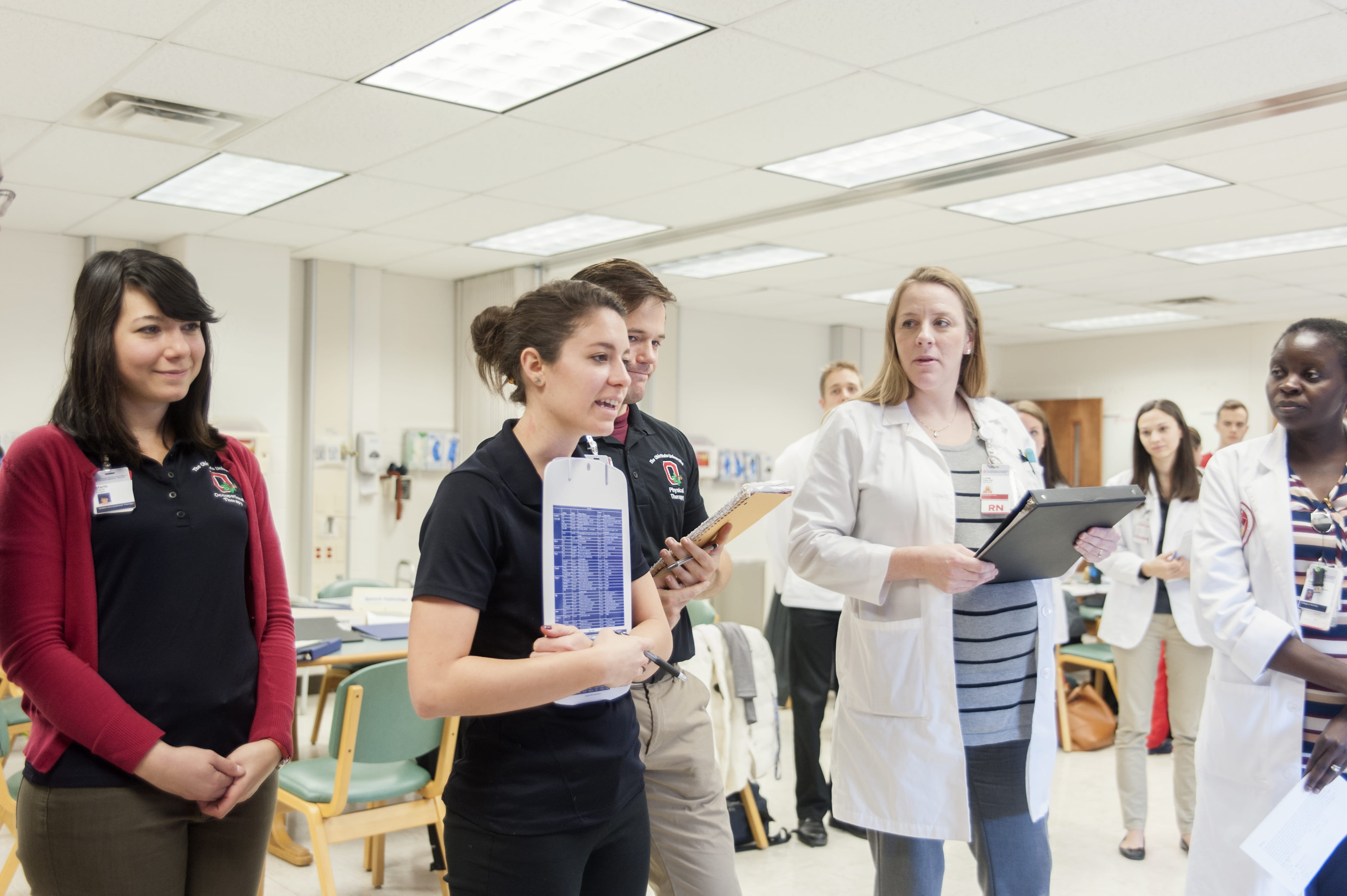Want to learn more about our OTD Program?
Follow the Occupational Therapy Program
 Occupational therapy enables people to do the 'day-to-day activities that are important to them' despite impairments, activity limitations or participation restrictions or despite risks for these problems. Occupations are another name for these day-to-day activities. At Ohio State, you will acquire the skills to facilitate independent living in people with a variety of disabilities and disorders.
Occupational therapy enables people to do the 'day-to-day activities that are important to them' despite impairments, activity limitations or participation restrictions or despite risks for these problems. Occupations are another name for these day-to-day activities. At Ohio State, you will acquire the skills to facilitate independent living in people with a variety of disabilities and disorders.
- Physical disabilities
- Cognitive disabilities
- Psychosocial dysfunctions
- Mental illnesses
- Developmental or learning disorders
- Maladaptive behaviors
- Other disorders or conditions
- Evaluating and providing intervention in collaboration with the client, family, care giver, or others
- Developing, improving, sustaining, or restoring skills in activities of daily living (ADL), work or productive activities, and play or leisure
- Identifying and facilitating engagement in meaningful and healthy occupations
- Developing, remediating, or restoring sensorimotor, cognitive, or psychosocial components of performance
- Educating the client, family, caregiver, or others in carrying out appropriate nonskilled interventions
- Consulting with groups, programs, organizations, or communities to provide population-based services
- Therapeutic use of meaningful and purposeful occupations
- Adaptation of environments and processes to enhance functional performance in occupations
- Promotion of health and wellness through engagement in valued occupations
- Graded tasks and activities as pre requisites to engagement in occupations
- Design, fabrication, application, or training in the use of assistive technology or orthotic devices and training in the use of prosthetic devices
- Application of physical agent modalities as an adjunct to or in preparation for engagement in occupations
- Application of ergonomic principles to the performance of occupations
Occupational therapists, through their interventions, enable people to regain health as well as function” (Edwards, 1997, p. 562). In other words, active engagement in a variety of occupations promotes and maintains physical, cognitive, and emotional health. Conversely, the lack of engagement in occupations leads to deterioration and dysfunction (Kielhofner, 1992). Occupational therapy practitioners also incorporate into their interventions the understanding that engagement in occupation affects quality of life. In other words, occupational therapy practitioners collaborate with others to design occupations that lead to accomplishment, mastery, and a sense of purpose and meaning in life. Therefore, occupational therapy services achieve:
- Quality of Life
- Function
- Health & Well-Being
- Occupational Performance
Occupational therapists work in a variety of settings, including private homes, children’s hospitals, general hospitals, rehabilitation centers, state hospitals, public and special schools, sheltered workshops and other community agencies. Some therapists establish their own private practices. With experience or additional education, occupational therapists may become administrators of occupational therapy departments.
The Bureau of Labor Statistics (BLS) is a federal government agency that publishes the Occupational Outlook Handbook, which provides detailed descriptions of most occupations. Click here for a complete description and outlook of the profession of occupational therapy.
